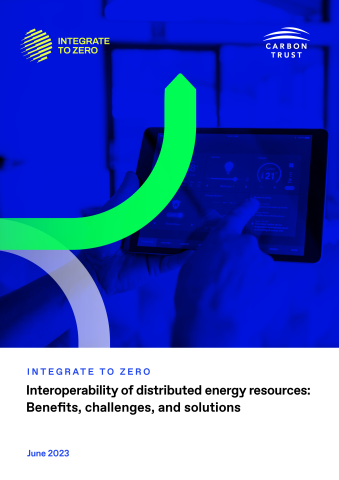This report considers the benefits of interoperable distributed energy resources (DERs) for residential and commercial consumers and the interoperability challenges that these users face when integrating devices with the grid, or for specific use-cases (grid-trade, back-up power, ancillary services).
DERs are integral to the energy transition and play an increasingly important role in the modern power grid. With DERs installed, consumers can experience a range of benefits such as lower energy bills, cheaper EV refuelling, and access to backup power in a blackout. DERs can also provide a range of grid-side benefits, from balancing variable supply and demand, to providing black start capability.
However, to maximise the benefits available to the consumer and the grid, DERs must also be to some extent ‘interoperable’ – capable of communicating and coordinating with other pieces of hardware, software, and various energy market actors. Interoperability is widely considered a pre-requisite for a reliable, resilient, and sustainable energy system.
However, consumers, product developers, and energy market actors currently face a range of interoperability challenges, often due to DERs that are not designed ‘from the ground up’ to be interoperable.
Manufacturers are often hesitant to develop interoperable solutions because of cybersecurity concerns, existing market advantages, and added development costs.
Yet, policymakers have also played a considerable part in determining the level of guaranteed or certified interoperability, with varying levels of success globally. Noting the prevalence of such interoperability challenges, and the issues of reduced functionality that can arise from limited interoperability, this report offers advice and possible solutions to consumers and policymakers.


